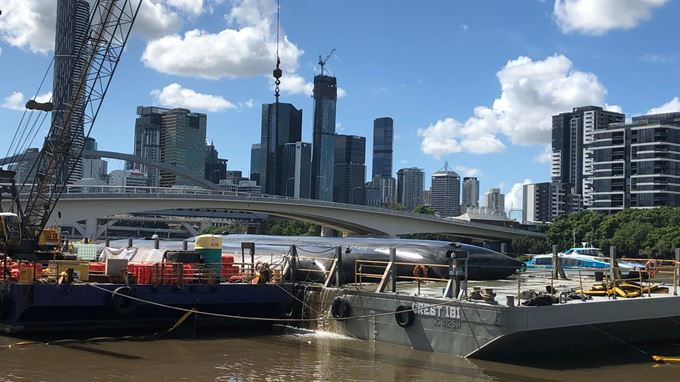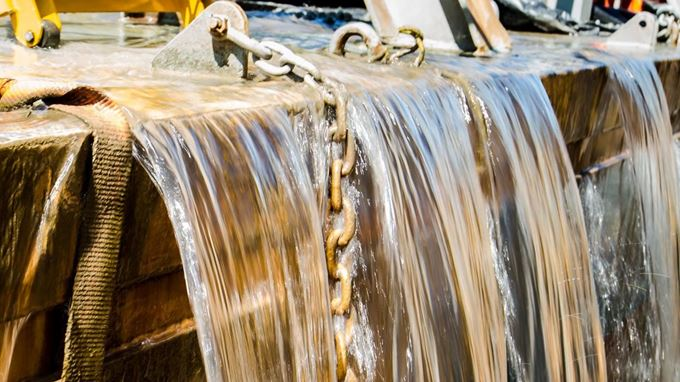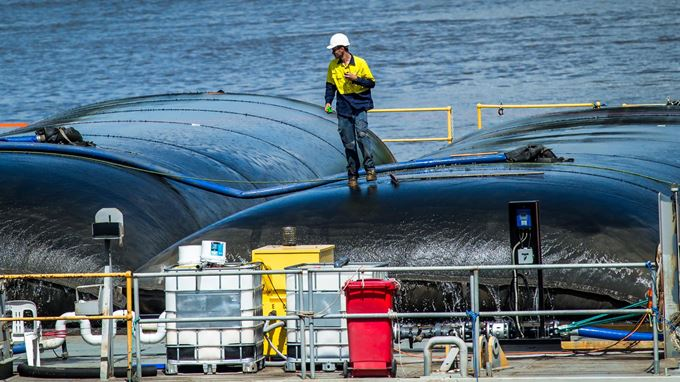Geotextile tubes are used in a wide variety of applications, such as coastal protection, flood defense, industrial processing, wastewater treatment, and dewatering. The use of dewatering tubes is quite interesting in how easily it scales up while providing a low maintenance option for dewatering sludges and sediments in diverse engineering sectors.
Here, we publish the first of two projects that show the tremendous scalability of geosynthetic dewatering tubes, beginning from the use of two units on a barge in a high-profile project on the Brisbane River. Special thanks to TenCate Geosynthetics Asia for sharing the project details.
DEWATERING TUBES ON THE BRISBANE RIVER
A remote-controlled underwater dredger was deployed to excavate and clean out a blocked stormwater drain that discharged into the Brisbane River. The sediments were pumped into Geotube® dewatering units on a barge moored in the river. The application was the first of its kind in Australia and highlighted the beneficial impact that geosynthetic dewatering materials can have on dredging works.

The submerged state of the blocked pipe presented the specialist contractor (Desilting Solutions) with two primary challenges:
- Removing the sludge with a remote-control underwater dredger
- Performing this work in a highly visible public location with stringent environmental and operating mandates
This placed a premium on containing the sludge as effectively and cleanly as possible.
Challenges ranging from identifying a method of containing and dewatering dredged sediments and applying a suitable polymer flocculant in a saline water environment to sediments that varied from fine contaminated clay to residual sand deposits as well as avoiding all risk of accidental discharge of contaminated sediments into the river had to be addressed before work could proceed.
Two GT500D Geotube® dewatering units from TenCate Geosynthetics Asia were placed on the barge. The units were each 30.6m in length laid adjacent to one other. On an adjacent barge, the dredging equipment was staged.
MORE GEO: Revisiting the Benefits of Temporary Landfill Caps
As the geotextile tubes filled, the quality of liquids discharged from the tubes had to be monitoring and controlled to meet environmental quality flow back requirements for the waterway. A special polymer flocculant was used to to ensure rapid and effective dewatering of the sediments. Samples of the sludge were sent to the Center for Geosynthetic Research, Innovation, and Development for analysis, in order to determine the appropriate and optimal flocculant level. This was especially important given the saline nature of the river water in the pipe.

Once the dewatering units were full enough for sediment disposal, the barge delivered them downriver to an approved disposal zone.
We thank TenCate Geosynthetics Asia for sharing project details. More information is available here.












